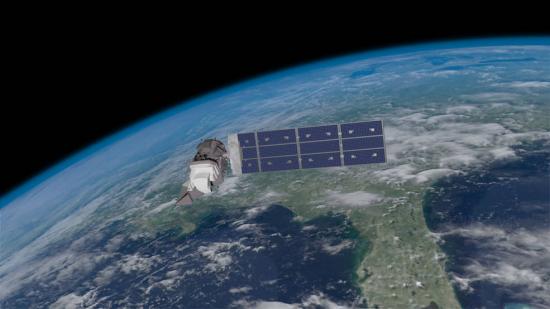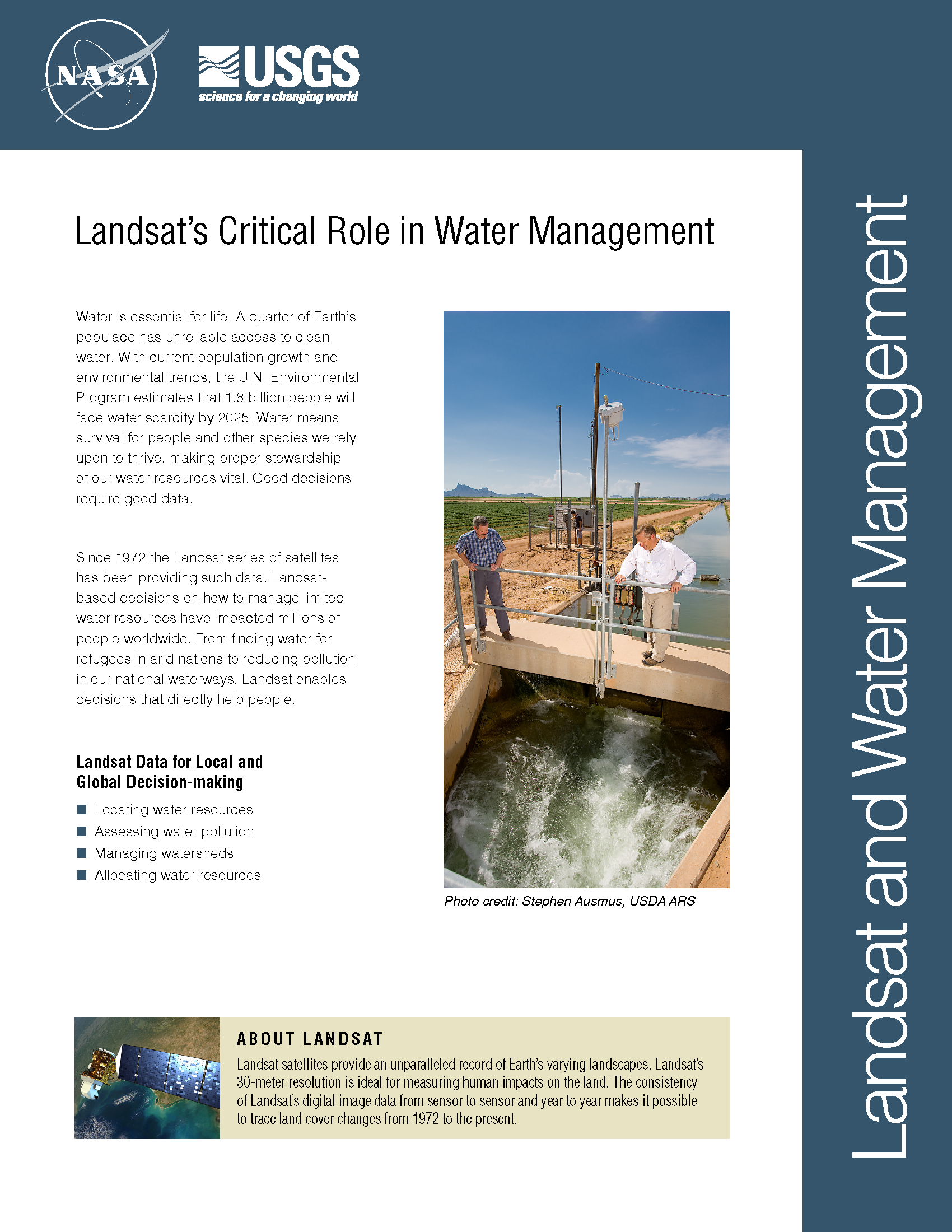Landsat’s Role in Managing Water Resources
Water is essential for life. A third of Earth’s populace has unreliable access to clean water. With current population growth and environmental trends, the U.N. Environmental Program estimates that 1.8 billion people will face water scarcity by 2025. Water means survival for people and other species we rely upon to thrive, making proper stewardship of our water resources vital. Good decisions require good data. Since 1972 the Landsat series of satellites has been providing such data. Landsat-based decisions on how to manage limited water resources have impacted millions of people worldwide. From finding water for refugees in arid nations to reducing pollution in our national waterways, Landsat enables decisions that directly help people.
Vast Water Reserves Found in Drought-Prone Northern Kenya
Large underground water reserves have been found in Turkana, one of Kenya’s driest and poorest regions. The discoveries were made by the natural resources exploration firm, Radar Technologies International, during the course of a survey of groundwater conducted for the Kenyan Government on behalf of the UN. The aquifers were detected with the WATEX System, RTI’s state-of-the-art, space-based exploration technology.
Environmental Monitoring with Public Domain Satellites
WNYC’s Leonard Lopate talks with SkyTruth president, John Amos, about using public domain satellite imagery, such as Landsat, to monitor the environment. SkyTruth uses all types of satellite imagery to monitor environmental changes and disasters; Landsat is prominently mentioned among them.

Landsat Images Provide the Gold Standard for New Earth Applications
Images from Landsat satellites provided free to the public by the Department of the Interior’s U.S. Geological Survey were the starting points for “a new breakthrough” reported today by Time and announced
New Maps Provide Crucial Information for Water Managers
For the first time, U.S. Geological Survey scientists have mapped long-term average evapotranspiration rates across the continental United States—a crucial tool for water managers and planners because of the huge
Landsat Monitors Chesapeake Bay Change
Landsat is a critical and invaluable tool for characterizing the landscape and mapping it over time. Landsat data provides a baseline of observations for science about how human activities on
What is the Economic Value of Satellite Imagery?
Does remote-sensing information, such as that from Landsat and similar Earth-observing satellites, provide economic benefits to society, and can this value be estimated? Using satellite data for northeastern Iowa, U.S. Geological Survey scientists modeled the relations among land uses, agricultural production, and dynamic nitrate (NO3–) contamination of aquifers.


